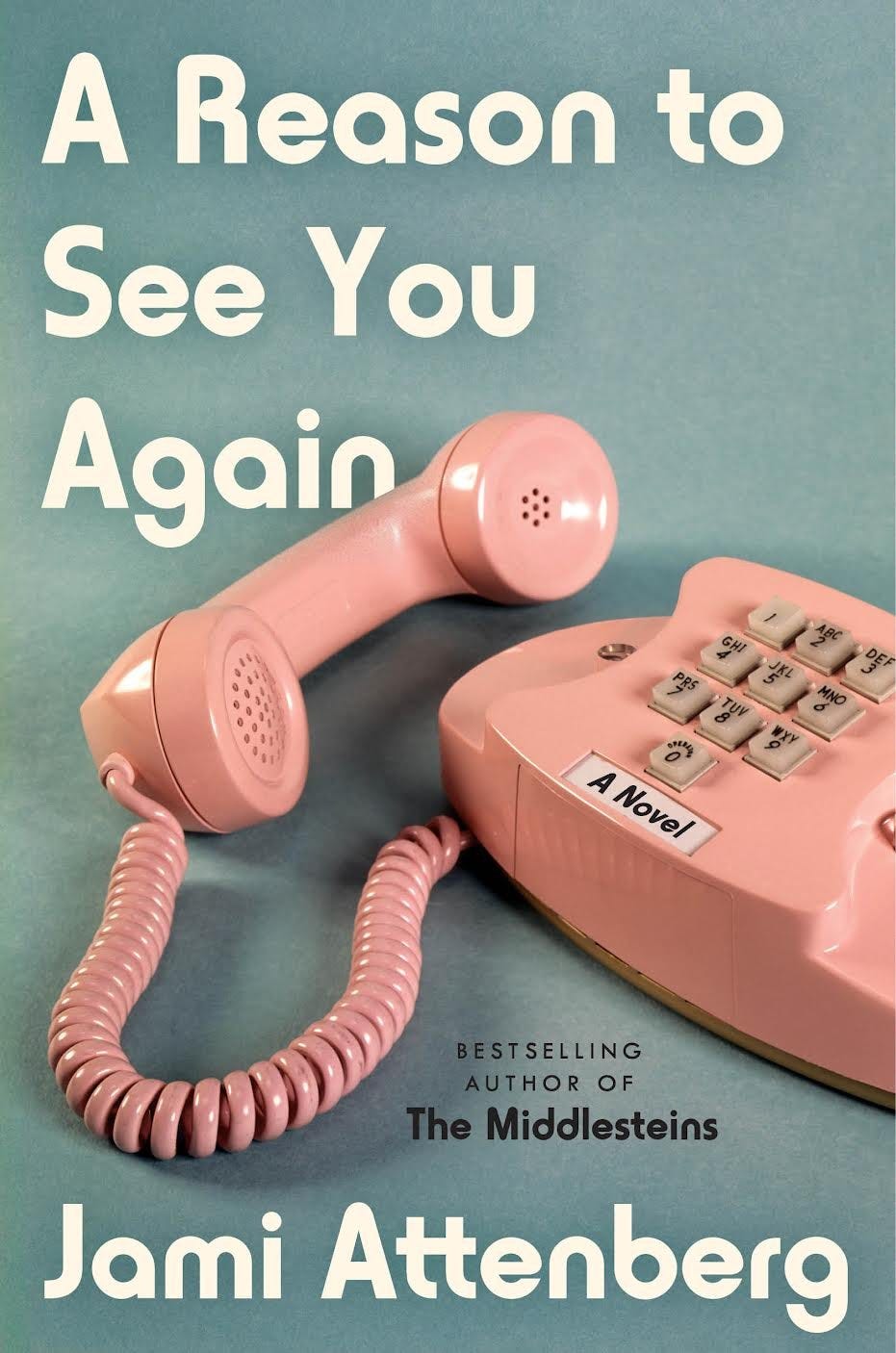Creating a Sustainable Writing Practice
An interview with New York Times bestselling author and @1000words creator Jami Attenberg
What keeps a writer writing? I’ve been fascinated with that question since I began publishing in 1988 and teaching in 2001.
Some writers start with the momentum of a rocket but can’t sustain it long enough to finish a project. And sustainability is really the key—what makes us reach our writing goals is less about talent than the skill of staying with the project, even when the going is hard. I have been interviewing writers for years about the magic of steady progress, how they tolerate (even welcome) detours that most writing projects typically take. In my own life, the difference between satisfaction with your creative life—and making it to the goal you set—comes down to a few key elements.
I wrote about these: the essential tools that make a writing practice possible, the way we organize and keep track of our work, and the five elements that make the difference between practice and perfect. But I’m always interested in hearing from others who have achieved this kind of sustainability in their practice.
Introducing Jami
has ten books under her belt. In 2018, she and a writing friend created a unique accountability system when Jami was faced with a deadline: they’d write 1000 words each every day for two weeks. Jami has an active online community—her Substack, Craft Talk, is one of my favorite reads each week. When she opened the idea of 1000 words a day to her community, thousands of people joined. And it worked. It became a strong movement that, in my view, has helped so many writers develop a sustainable writing practice. Out of this came the annual online group writing accountability project called #1000wordsofsummer and the mini 1000words that happen throughout the year. When her book, 1000 Words: A Writer’s Guide to Staying Creative, Focused, and Productive All Year Round, came out last January, I immediately grabbed a copy. It’s full of writerly wisdom—not just Jami’s own, but from the likes of Roxanne Gay and Meg Wolitzer and Alex Chee.
I was thrilled when Jami agreed to answer a few questions about her particular writing practice and what keeps it going.
Our conversation
Q: You obviously have a steady writing practice with @1000words. Can you share more about specifics and logistics of this practice? Where do you write most often and how do you approach the page? For instance, do you like to write most regularly at home or in a coffeeshop, library, etc., or do you change it up and why?
Jami: While there are exceptions to every rule, I mostly write at home.
I have a nice office space in the back of my house that I use when I want to sit at a desk and type. I have a big chair in there, also, which I sit in to handwrite in the mornings and also read and drink coffee.
I get most of my work done before noon—I get up at 6:00 a.m.—so I try to keep it really lean and mean at home.
Occasionally I will go out to work at a cafe in the neighborhood. And that can be for doing edits or needing to get through some emails or even write a newsletter.
Q: How long do you write in one session, typically, and what do you prefer writing with (device, laptop, pen and paper)?
Jami: I can write 1000 words really quickly. If I just want to generate raw text I can do that in an hour or so. I've been doing this a long time! So I've gotten pretty good at getting in the zone and doing it efficiently.
When I'm generating new fiction, it's usually done first thing in the morning, on paper, or on my computer, or sometimes on my cellphone if I just want to get some really rough ideas down quickly. And again, that's usually done in my home.
So I'm using all kinds of means. Paper is for the most daydreamy stuff. Cellphones are often used to bang out messy dialogue exchanges or long running sentence descriptions, as an example of rough ideas.
When I finally get on my computer and into my Word document, that's when I'm going to be tidying things up.
Q: Is there a system to your approach or is the word count goal your only structure for this practice?
The word count is truly the only goal, just to get a good pile at the end of the day, week, or month, so I have something to play with. More time is often spent on the cleaning up and the crafting and the carving out a structure and a narrative.
But first we must have the words before we can do any of this high-level tailoring.
I don't really feel satisfied with my day unless I've gotten some kind of work done. Those thousand words are actually an easy way to feel like I've accomplished something.
Thank you, Jami!
Want more from Jami Attenberg? Check out Craft Talk for down-to-earth insights on a sustainable writing life and her new book, A Reason to See You Again.
Your Weekly Writing Exercise
It pays, I’ve learned, to be organized in your approach to a sustainable writing practice. To still keep the creativity, but to also have some structure that keeps you writing.
Long projects like books are the hardest for most—a marriage compared to a date. Good marriages need patience, dedication, showing up, and occasional therapy to hang together.
This week, answer for yourself the first two questions I asked Jami above.
Where do you write most often and how do you approach the page?
How long do you write in one session, typically, and what do you prefer writing with (device, laptop, pen and paper)?
Can you answer these easily? Are there any places you stumble or wish you had your practice stronger?
Jami says, “The word count is truly the only goal, just to get a good pile at the end of the day, week, or month, so I have something to play with. More time is often spent on the cleaning up and the crafting and the carving out a structure and a narrative. But first we must have the words before we can do any of this high-level tailoring.”
So a final question to think about this week, in your own practice:
How do you get your words accumulated? What could you try this week that might give you new energy towards your writing goal?
Be sure to check out Jami’s books, as well as her Craft Talk newsletter on Substack.
Shout Out!
A hearty shout out to these writing friends and former students who are publishing their books! I encourage you to pre-order or order a copy to show your support of fellow writers and our writing community.
(If you are a former student and will publish soon (pre-orders of your book are available now), or have in the past two months, email mary[at]marycarrollmoore[dot]com to be included in a future Shout Out! I’ll keep your listing here for two months.)
Jim Hight, Moon Over Humboldt (Black Rose Writing), August release
Darrell J. Pedersen, Who Will Carry the Fire? More Reflections from a North Woods Lake (River Place Press), August release
Jan Skogstrom, The Light Shines in the Darkness—A Spiritual Journey (Itasca Books), August release
Megan Lindhal Goodrich, Beyond Terminal: Processing Childhood Trauma to Reclaim Self (Wise Ink), September release
Elizabeth Jarrett Andrew, The Release: Creativity and Freedom after the Writing Is Done (Skinner House), October release
Morgan Baylog Finn, The Gathering: Poems (Finishing Line Press), November release
I’m a lifelong artist, and I love to inspire and support other creative folk, which is why I write this weekly newsletter. My goal with these posts is to help you strengthen your writing practice and creative life so it becomes more satisfying to you.
I’m also the author of 15 books in 3 genres. My third novel, Last Bets (Riverbed Press), was published in April, after becoming an Amazon bestseller during pre-orders. My second novel, A Woman’s Guide to Search & Rescue (Riverbed Press), was published in October 2023 also and became an Amazon bestseller and Hot New Release from pre-orders. For twelve years, I worked as a full-time food journalist, most notably through my weekly column for the Los Angeles Times syndicate. My writing-craft book, Your Book Starts Here, won the New Hampshire Literary Awards “People’s Choice” in 2011 and my first novel, Qualities of Light, was nominated for PEN/Faulkner and Lambda Literary awards in 2009. I’ve written Your Weekly Writing Exercise every Friday since 2008.




This was a great read. I feel as though I journal just about every day; even if it is a paragraph. I post notes here on Substack Monday-Friday. I have been working on my blog on a weekly basis. Now I have to go back and do "high level tailoring" on future posts as Jami said. I don't really keep track of the time when I write.
Thank you for having me!!